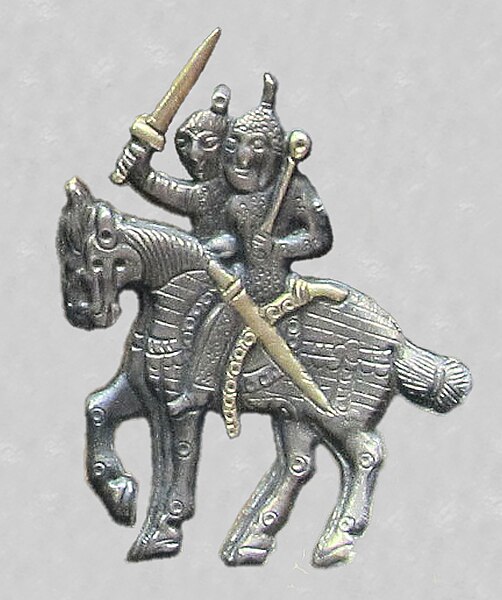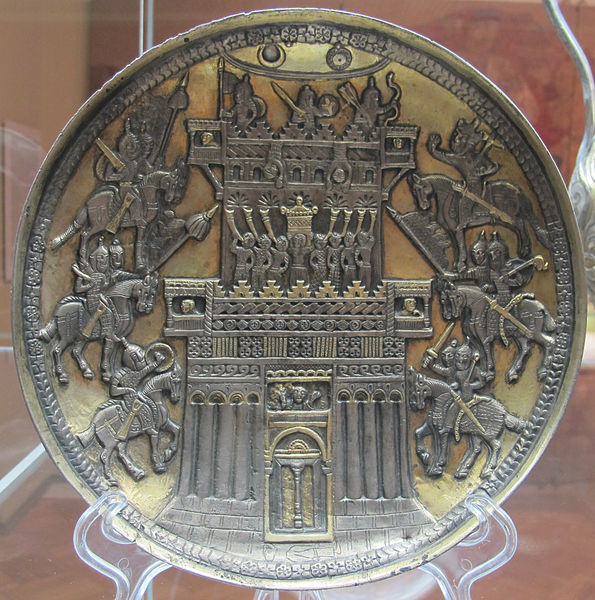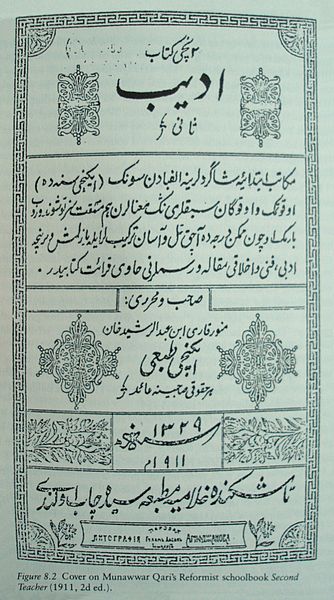The Karluks were a prominent nomadic Turkic tribal confederacy residing in the regions of Kara-Irtysh and the Tarbagatai Mountains west of the Altay Mountains in Central Asia. Karluks gave their name to the distinct Karluk group of the Turkic languages, which also includes the Uzbek, Uyghur and Ili Turki languages.
Armoured horsemen on the Anikova dish, Semirechye, c. 800.
The Anikova dish: a Nestorian Christian plate with decoration of a besieged Jericho, by Sogdian artists under Karluk dominion, Semirechye. 9th-10th century, copied from an 8th century plate with designs and military equipement related to Penjikent.
The Grigorovskoye Plate: a Nestorian Christian dish with Syriac inscriptions, from Semirechye, 9th–10th century CE, created under Karluk dominion.
The Kara-Khanid ruler "Ilig Khan" on horse, submitting to Ghaznavid ruler Mahmud of Ghazni, who is riding an elephant, in 1017. They agreed to partition former Samanid territory along the Oxus river. Jami' al-tawarikh, circa 1306–14.
Uzbek, formerly known as Turki, is a Karluk Turkic language spoken by Uzbeks. It is the official and national language of Uzbekistan and formally succeeded Chagatai, an earlier Karluk language also known as "Turki", as the literary language of Uzbekistan in the 1920s.
A 1911 text in the Arabic alphabet
Covers of translated books in Uzbek. As can be seen, both Latin and Cyrillic scripts are widely used in the country. Most names are also transliterated, for example Robert Luis Stivenson is equivalent to Robert Louis Stevenson.






